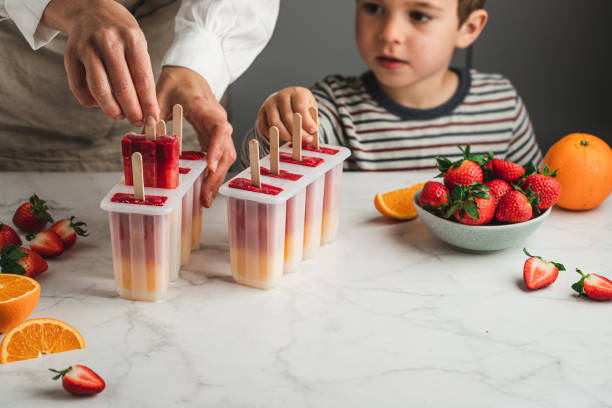Fast food is frowned upon by health-conscious people – but you can treat yourself to it every now and then. But be careful: If you get the urge for a burger or a pizza, don’t eat it in front of small children, because even one-year-olds register good and bad eating habits! That’s the result of a new study. EAT SMARTER explains what’s behind it.
Eeeeeeeeeeeeeeeeeeeeeeeeeeeet!
Child nutrition is an important issue, especially for first-time parents. What can the child eat and what is unhealthy for the little ones? What they often don’t think about is that what they eat also influences the child.

The parents shape their children. Even if the toddler happily munches his carrot mash, he can tell when dad is enjoying a greasy cheeseburger but grimaces at the vegetables. From an early age, we learn which foods we (should) like and which we don’t.
Regional and social factors play a major role here: Germans have different favorite foods than the French, and Hamburgers eat differently than Bavarians. How our parents raise us, our food experiences and genetics influence our eating habits. This is how personal taste develops, which of course is primarily shaped by family.
A study by Cornell University in Ithaca now shows that even small children from the age of one put out their feelers for it. “When babies see someone eating, they not only learn about the food, they also learn who is eating with whom,” explains one of the researchers.
For the study, 200 babies were shown different eating situations via video. In one video, people were apparently strangers to each other and spoke in different languages. In the other video, the actors looked familiar and spoke the same language.
Both groups clearly expressed their feelings towards the food: if they liked it, they looked enthusiastic, if they rejected it, they grimaced. The babies were particularly drawn to the video, in which people interacted intimately. It was striking that when the small children were clearly disgusted, they automatically expected that everyone would share the disgust.
The eye eats with you
Disgust at certain dishes is originally our body’s protective function: it warns of potential pathogens. Anthropologist and epidemiologist Valerie Curtis of the London School of Hygiene and Tropical Medicine believes that disgust evolved over time and is firmly embedded in our genes.
Disgust is expressed by people all over the world with the same facial expression: puckering up the upper lip, wrinkling the nose, sometimes even narrowing the eyes. Small children perceive these facial expressions and, according to the study, also categorize the food as repulsive.

So: Be careful when eating when small children are sitting at the table. Child nutrition is not only what the child gets to eat, but also what the parents eat in front of the child. Because even one-year-olds register disgust or satisfaction from the people around them – if you look peacefully at the burger and wrinkle your nose at the vegetables, you are laying a bad foundation in terms of upbringing.
